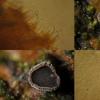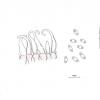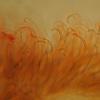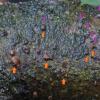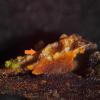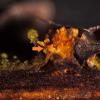
09-01-2026 17:41
Arnold BüschlenHallo, F. dilatata wird von vielen Bryoparasiten

10-01-2026 20:00
Tom SchrierHi all,We found picnidia on Protoparmeliopsis mur

07-01-2026 22:22
 Danny Newman
Danny Newman
Tatraea sp. on indet. hardwood The Swag, Great Sm

10-01-2026 01:18
 Danny Newman
Danny Newman
cf. Neovaginatispora fuckelii on indet. shrub Pre

07-01-2026 10:24
 Danny Newman
Danny Newman
Pezicula sp. on indet. hardwood Appalachian Highl

09-01-2026 10:08
 Blasco Rafael
Blasco Rafael
Hola, en el mismo habitat que la anteriorRetamaDia

08-01-2026 21:22
 Blasco Rafael
Blasco Rafael
Hola, He recogido esta muestra de Orbilia sobre Re

07-01-2026 17:29
 Marc Detollenaere
Marc Detollenaere
Dear Forum,On a barkless Populus I found some smal

10-11-2021 17:33
 Riet van Oosten
Riet van Oosten
Add-on topic http://www.ascofrance.com/forum/7059

07-01-2026 10:05
 Danny Newman
Danny Newman
cf. Chaetospermum on XylariaCosby Campground, Grea
bonjour à tous,
I wonder if someone can help me with this pretty little species I found 16/2/2014 near Gatwick Airport, UK:
51.1591°N 0.1986°W 60 metres altitude
On a Crataegus branch 5' above the ground
Ascospores 5.5-7.4 x 2.6-3.3 µm, with two big droplets (and sometimes some small ones).
Asci with croziers (really hard to find - I wonder if this feature isn't constant?). IKI-
Hairs bent, without obvious vacuoles, thick walled.
Excipulum of red-brown cells, textura angularis.
It seems close to Zotto's illustration of HB3666 U.marsoni but I have absolutely no experience of this genus and have little literature on it (is U.marsoni a nom. prov by the way? I don't see it in IF...).
merci pour l'aide,
Nick

you may well be right. This U. marsonii is a provisional name of us, but I still have no clear species concept in that genus. I assume frm your photo that the narrow part of the hairs is thin-walled (your drawing doe snot show). In some species it can partly be solid-glassy without lumen, though only in some of the hairs.
Croziers are usually a constant feature, and in Unguiculariopsis I do not remember any specimen without them.
The apothecia are rather large in U. marsonii (0.3-)0.7-1.5 mm. How in yours?
Zotto

A nice genus to investigate !
Nothing to add to Zotto's answer, but as you can see in Zuangh & Korf , Unguiculariopsis species seem fungicolous or linked to linchens. Did you notice any Pyreno around ?
Amitiés
Michel
Cher Zotto, Michel et autres,
Yes I have a similar size range of apothecia (in fact just a little larger at 0.5 - 1.7 mm)
The hairs were a little difficult to interpret for me - Does 'lumen' mean the clear differentiation between the glassy part and the non-glassy part (like the hairs in Olla)? If I understand correctly, none of the hairs had this character.
I have had another look at the hairs (apologies for my poor photo) and you're right, a few of the hairs have glassy tips.
Thanks Michel, that's interesting - I was unaware of any fungicolous association, but I'll go back to the site to double-check because I only took a very small piece of the substrate.
Amitiés,
Nick

Zotto
Salut à tous,
I'm back to this with some more data:
Zotto - Thanks for the explanation. I've prepared the hairs in KOH + Congo red as you suggested. I think the result supports your theory that there are no solid-glassy ends - So it must have been the plasma making the hairs look refractive in water in my previous photo....What do you think?
I returned to the site for a thorough search and found the same species in 6 different locations, each time on Crataegus branches 3-6' above the ground (I looked on other substrates too, particularly Rosa and Fraxinus).
Out of the 6 collections, 5 were within 20mm of Pezicula sepium. (In my photos, P.sepium is marked with orange arrows, Unguiculariopsis sp. with purple).I compared my collection to several species in Zuang & Korf but nothing seems to fit convincingly - U.robergei subsp. robergei is perhaps closest, but that species is said to have solid-glassy hairs, smaller apothecia and a different host.
Zotto's U.marsonii looks like a much nicer fit to me....
Amitiés,
Nick

thanks for these splendid results, you made a very good study!
In coll. HB 3675 you perhaps saw that the apos also grew tightly with Pezicula sepium. In HB 3666 we thought that no fungus grew in association. Both were on Crataeg
us.
Two others were on Prunus spinosa (HB 4873 and an unillustrated one, HB 4330). In Both no Pezicula was present, but other fungi grew more or less close, such as Proliferodiscus, Unguiculella etc.
The one by Jean-Paul (JPP 23141) has solid hair tips and was on Populus, so perhaps a different species.
The apos on Prunus were a bit smaller (max. 1.25mm), but otherwise apparently rather similar to those on Crataegus. Presently I am unable to say whether or not they are conspecific.
In any case, your find helped a lot to lift the mystery about this species.
Zotto
Thanks Zotto,
Yes, I saw this association with Pezicula in HB 3675 - Very interesting!
Maybe JPP 23141 is something else. I didn't see HB 4873 until now - It looks pretty similar!
I'll look more closely at Prunus spinosa in the next few days to see if I can find anything (there's plenty at the site).
It might be worth mentioning that my collection without P.sepium also had Karstenia rhopaloides and Botryosphaeria sp. - I didn't encounter any of the fungi mentioned in HB 4873 at all.
Amitiés,
Nick
